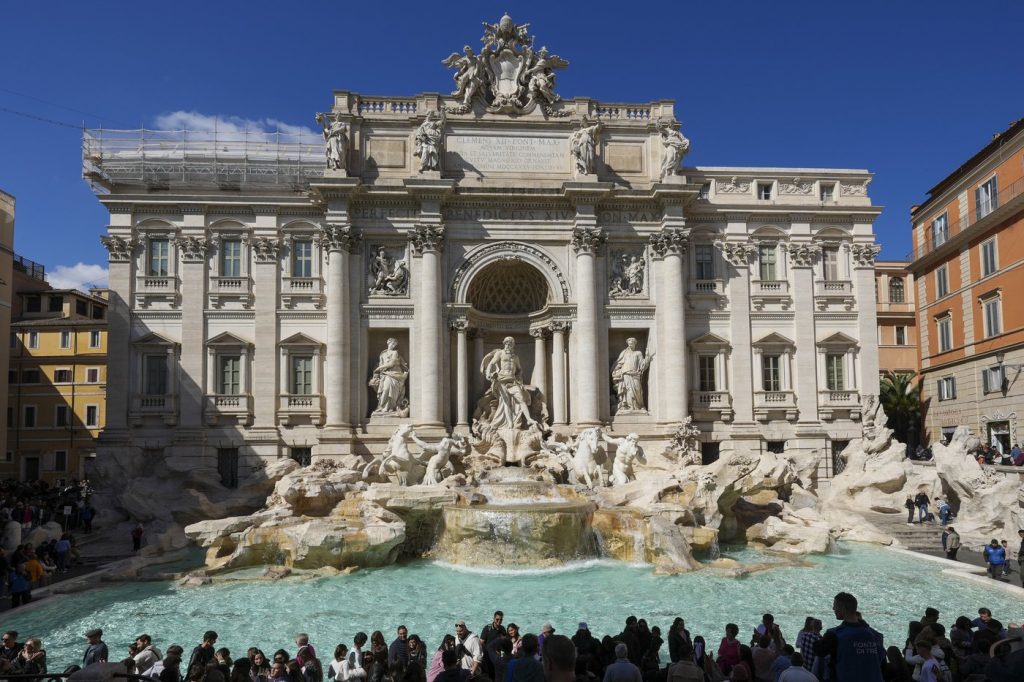ROME (AP) — The Trevi Fountain, recognized as one of the most iconic fountains globally, has been a prominent feature in various forms of media from Federico Fellini's classic film "La Dolce Vita" to the modern Netflix series "Emily in Paris." Each year, millions of tourists throng through the narrow streets of Rome, eager to admire the stunning structure featuring the Titan god Oceanus, adorned with flowing waterfalls that spill into a sparkling turquoise basin.
However, the intricate mechanics that create the beautiful spectacle of water at the Trevi Fountain remain largely unseen by the visitors. Situated just behind Oceanus, an array of maneuvering chambers houses the essential water supply system that sustains the fountain. This water is piped in from the Aqua Virgo, an ancient Roman aqueduct located 16 kilometers (10 miles) away. The operation of the fountain relies on two electric pumps that recycle an impressive 126 liters (33 gallons) of water every second. The flow is meticulously monitored 24/7 by ACEA, Rome's water management company, ensuring the precision necessary for the flow of water around the beautifully crafted statues.
The contemporary maneuvering chamber is equipped with metal tanks and illuminated panels, representing a technological evolution from its historical predecessor. In the original arched chamber, visitors can hear the rush of water through a thick pipe, alongside an authentic hydrometer dating back to the 18th century, used to measure the fountain's water level. Moreover, a large and basic spreadsheet on the wall lists the names of affluent Roman families who were once recipients of the water supply; if they failed to pay their bills, their access was promptly restricted.
The chambers feature grated windows that provide captivating views of the Trevi Fountain and its ceaseless stream of visitors, who are often unaware of the sophisticated workings that keep the fountain operational. Crowds frequently toss coins over their shoulders into the fountain's waters, acting on a popular belief that this ritual ensures their eventual return to the eternal city, an integral part of Roman culture.
While the artistry of Baroque architecture and the charm of the fountain itself attract millions, the hidden infrastructure plays a crucial role in maintaining this beloved landmark. The Trevi Fountain represents not only a significant cultural heritage but also an engineering marvel that has stood the test of time, evolving through centuries while still enchanting all who come to witness its beauty.










